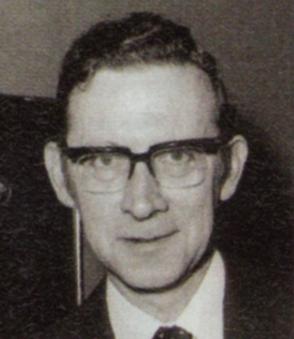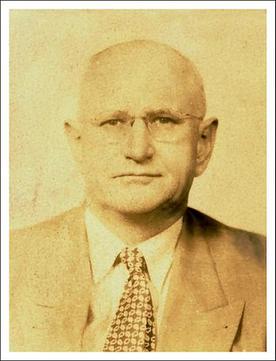
Philatelic literature is written material relating to philately, primarily information about postage stamps and postal history.

Illegal stamps are postage stamp-like labels issued in the names of existing independent countries or territories used to defraud postal administrations, stamp collectors, and the general public. Often, but not always, a member nation of the Universal Postal Union (UPU) will have asked the UPU to issue an "International Bureau Circular" advising others of the illegal stamps. According to the UPU, the market is estimated to be at least $500 million per year.

L.N. and M. Williams were a philatelic writing partnership made up of brothers Leon Norman Williams and Maurice Williams (1905–1976).

John Harry Robson Lowe was an English professional philatelist, stamp dealer and stamp auctioneer.

James Negus was a British philatelist and book editor.

Frederick John Melville was a British philatelist, prolific philatelic author and founder of The Junior Philatelic Society. He was also a founder in 1907 of the Philatelic Literature Society. Melville is a member of the American Philatelic Society's Hall of Fame and was a signatory to The Roll of Distinguished Philatelists in 1921.
Raoul Charles de Thuin (1890–1975) was a prolific stamp forger and dealer who was originally a citizen of Belgium but who operated from Mérida, Yucatán, Mexico, of which country he eventually became a naturalised citizen. De Thuin's work was considered so dangerous to philately that his tools and stock were purchased by the American Philatelic Society in 1966 in order to curtail his activities.
Erasmo Oneglia (1853–1934) was an Italian printer, born in Turin, who was also a successful stamp forger in the 1890s and early 1900s.

Fritz F. Billig (1902–1986) was a Viennese philatelist and stamp dealer who fled to the United States after the Austrian Anschluss in 1938 and continued his career from Jamaica, New York. There he published a successful and long-running series of philatelic handbooks that are still regularly referred to by philatelists today.

A specimen stamp is a postage stamp or postal stationery indicium sent to postmasters and postal administrations so that they are able to identify valid stamps and to avoid forgeries. The usual method of invalidating the stamps is either overprinting in ink or perforating the word Specimen across the stamp and where English is not the common language, the words Muestra (Spanish), Monster (Dutch), Muster (German) or Образец have been used instead.
In philately, the Higgins & Gage World Postal Stationery Catalog is the most recent encyclopedic catalogue of postal stationery covering the whole world. Despite most volumes not having been updated for over thirty years, the catalogue and the H & G numbering system are still widely used by philatelists and stamp dealers although the values given in the catalogue are out of date.

The story of Japan's postal system with its postage stamps and related postal history goes back centuries. The country's first modern postal service got started in 1871, with mail professionally travelling between Kyoto and Tokyo as well as the latter city and Osaka. This took place in the midst of the rapid industrialization and social reorganization that the Meiji period symbolized in Japanese history. Given how the nation's railroad technology was in its infancy, Japan's growing postal system relied heavily on human-powered transport, including rickshaws, as well as horse-drawn methods of delivery. For example, while commemorating the 50th anniversary of Japan's postal service, the country's 1921 government released decorative postcards depicting intrepid horseback riders carrying the mail. This however was done to compare postal transport in past and present, as the other card showed modern transportation viz. rail and shipping. The railroad net from the north to the south, Aomori to Nagasaki, was completed in 1889. Prior to 1920s, local delivery was mainly by men- and horsepower, not principally different to Europe.

The Crawford Library is a library of early books about philately formed between 1898 and 1913 by James Lindsay, 26th Earl of Crawford. By the time of his death in 1913, Crawford was thought to have amassed the greatest philatelic library of his time. Today, the library is part of the British Library Philatelic Collections.

Angelo Panelli was an Italian stamp forger, operating from Sanremo in the 1920s and 1930s.
Alan Keith Huggins MBE is a philatelist who in 1981, with Marcus Samuel, was awarded the Crawford Medal for his work Specimen stamps and stationery of Great Britain.

Stamp Collecting was a weekly magazine of stamp collecting published in London from 1913 to 1984.

Francis Hugh Vallancey was a schoolmaster, philatelist, philatelic author and editor, and dealer in philatelic literature. His business was destroyed during the London Blitz of 1941, but he rebuilt it after the war before ill health forced his retirement.

Henry Garratt-Adams was a British philatelist, philatelic publisher and dealer in philatelic literature based in Kinnersley Castle in Herefordshire, England. After his death, a large hoard of philatelic literature was found at the castle that included many rare items dating to the earliest days of philately.
Ezekiel Victor Toeg FRPSL was a British solicitor and philatelist who specialised in the postage stamps and postal history of the British West Indies (BWI) and Caribbean. His collection of Antigua won two gold medals at international stamp exhibitions and included a 1693 letter to London that was described in 1990 as the earliest known letter from the island. He wrote a book on the adhesive fees stamps of the Leeward Islands (1991) and completed a survey of the stamps and postal history of the island of Dominica to 1935 (1994). He was president of the British West Indies Study Circle (BWISC) from 1968 until his death in 2010.
Wilfrid Thomas Froggatt Castle was a British Church of England clergyman, author, and philatelist who wrote on the history and philately of the former Ottoman Empire, and of Cyprus in particular.














